ML Aggarwal Class 8 Solutions for ICSE Maths Chapter 1 Rational Numbers Ex 1.3
Question 1.
Multiply and express the result in the lowest form:
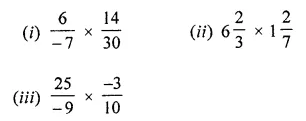
Solution:
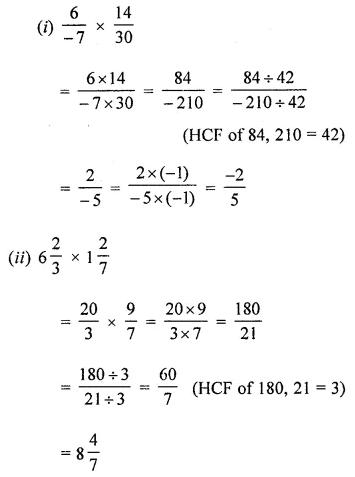
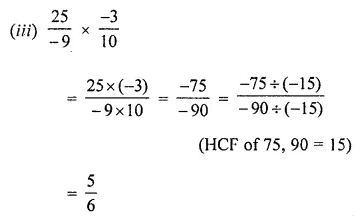
Question 2.
Verify commutative property of multiplication for the following pairs of rational numbers:
(i) \(\frac { 4 }{ 5 }\) and \(\frac { -7 }{ 8 }\)
(ii) 13\(\frac { 1 }{ 3 }\) and 1\(\frac { 1 }{ 8 }\)
(iii) \(\frac { -7 }{ -20 }\) and \(\frac { 5 }{ -14 }\)
Solution:
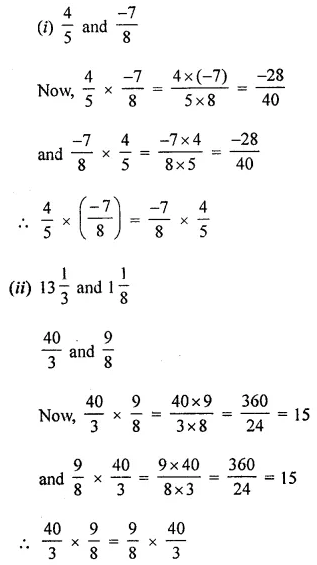
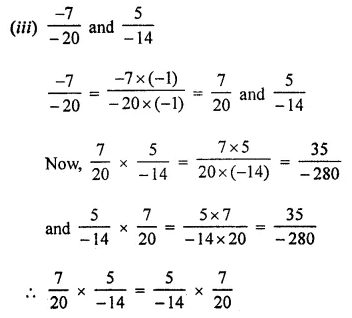
Question 3.
Verify the following and name the property also:
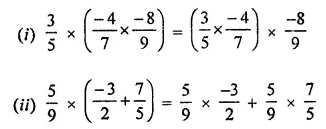
Solution:
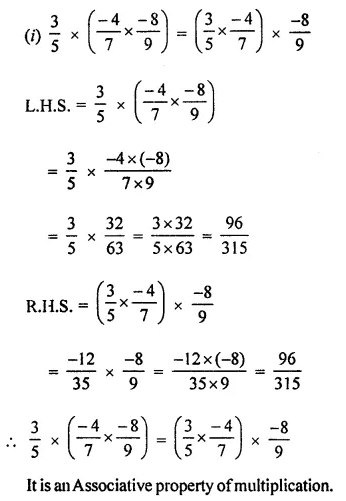
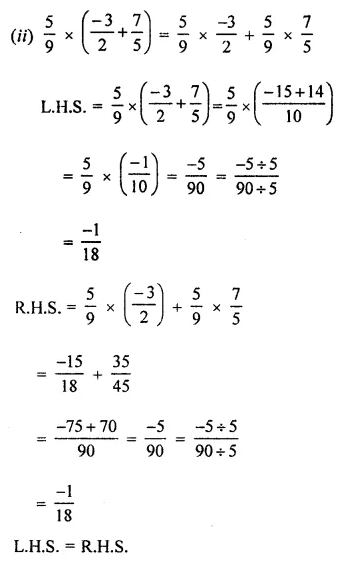
Question 4.
Find the multiplication inverse of the following:
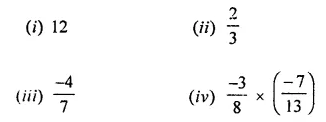
Solution:
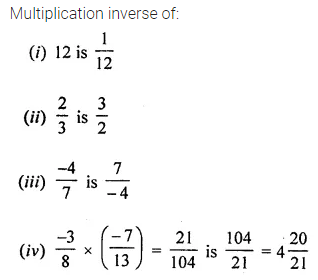
Question 5.
Using the appropriate properties of operations of rational numbers, evaluate the following:
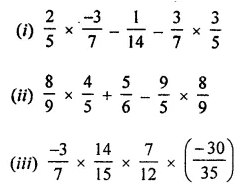
Solution:
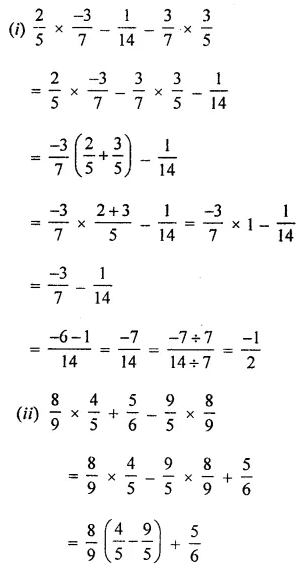
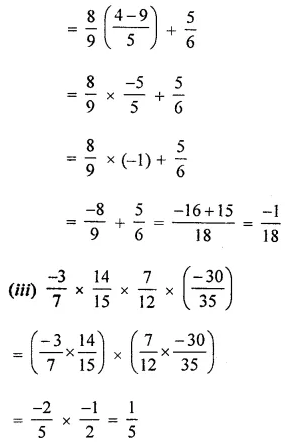
Question 6.
If p = \(\frac { -8 }{ 27 }\), q = \(\frac { 3 }{ 4 }\) and r = \(\frac { -12 }{ 15 }\), then verify that
(i) p × (q × r) = (p × q) × r
(ii) p × (q – r) = p × q – p × r
Solution:
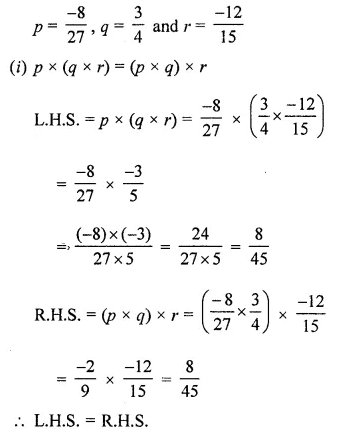
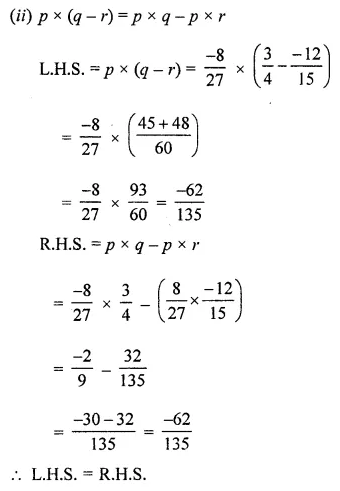
Question 7.
Fill in the following blanks:
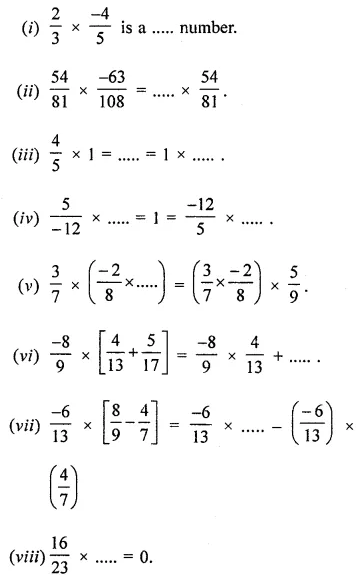
(ix) The reciprocal of 0 is …….
(x) The numbers ……… and ……. are their own reciprocals.
(xi) If y be the reciprocal of x, then the reciprocal of y2 in terms of x will be ………
(xii) The product of a non-zero rational number and its reciprocal is ………
(xiii) The reciprocal of a negative rational number is ………..
Solution:
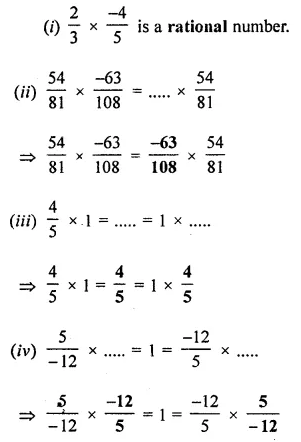

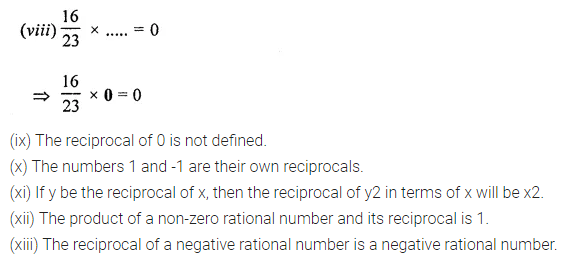
Question 8.
If \(\frac { 4 }{ 5 }\) the multiplicative inverse of -1\(\frac { 1 }{ 4 }\) ? Why or why not?
Solution:
![]()
Question 9.
Using distributivity, find
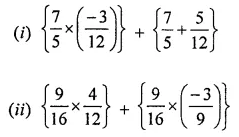
Solution:
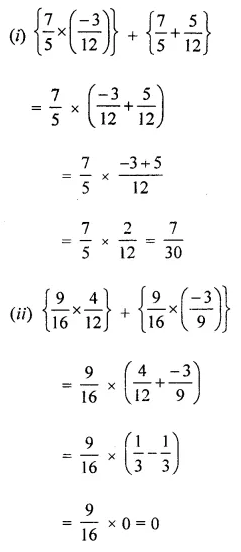
Question 10.
Find the sum of additive inverse and multiplicative inverse of 9.
Solution:
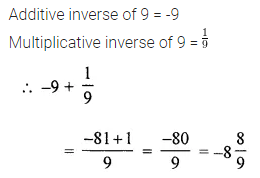
Question 11.
Find the product of additive inverse and multiplicative inverse of \(\frac { -3 }{ 7 }\)
Solution:
